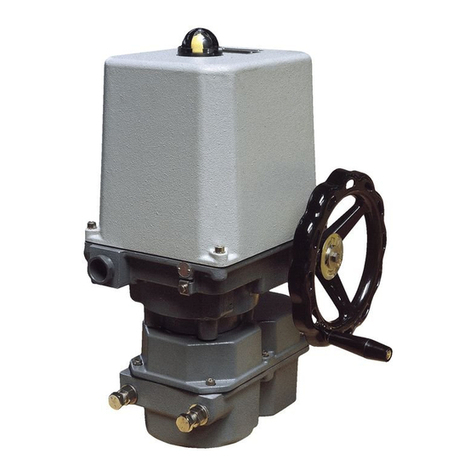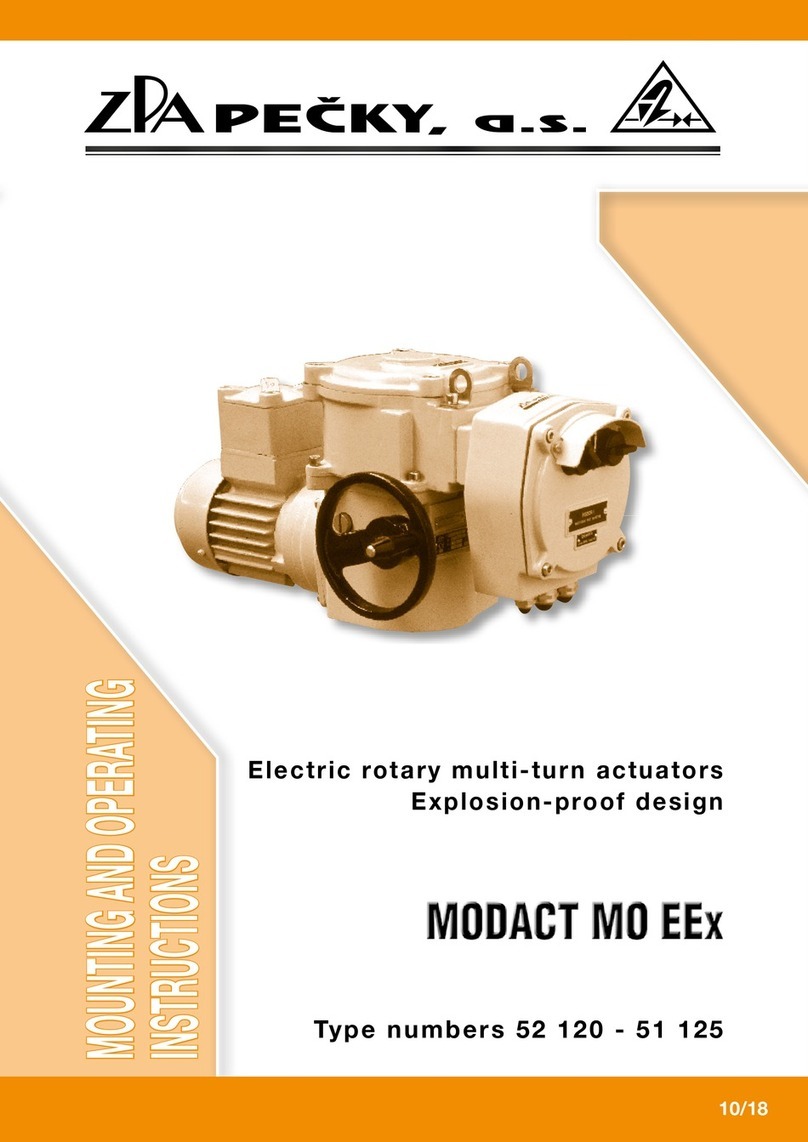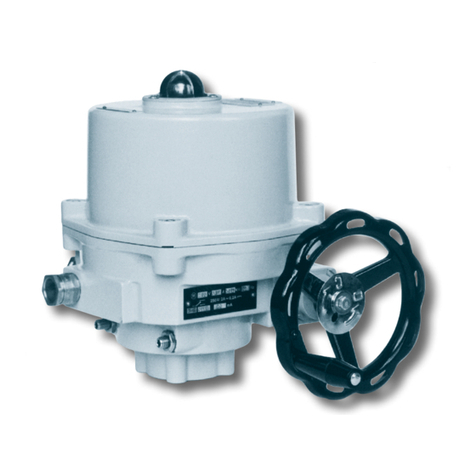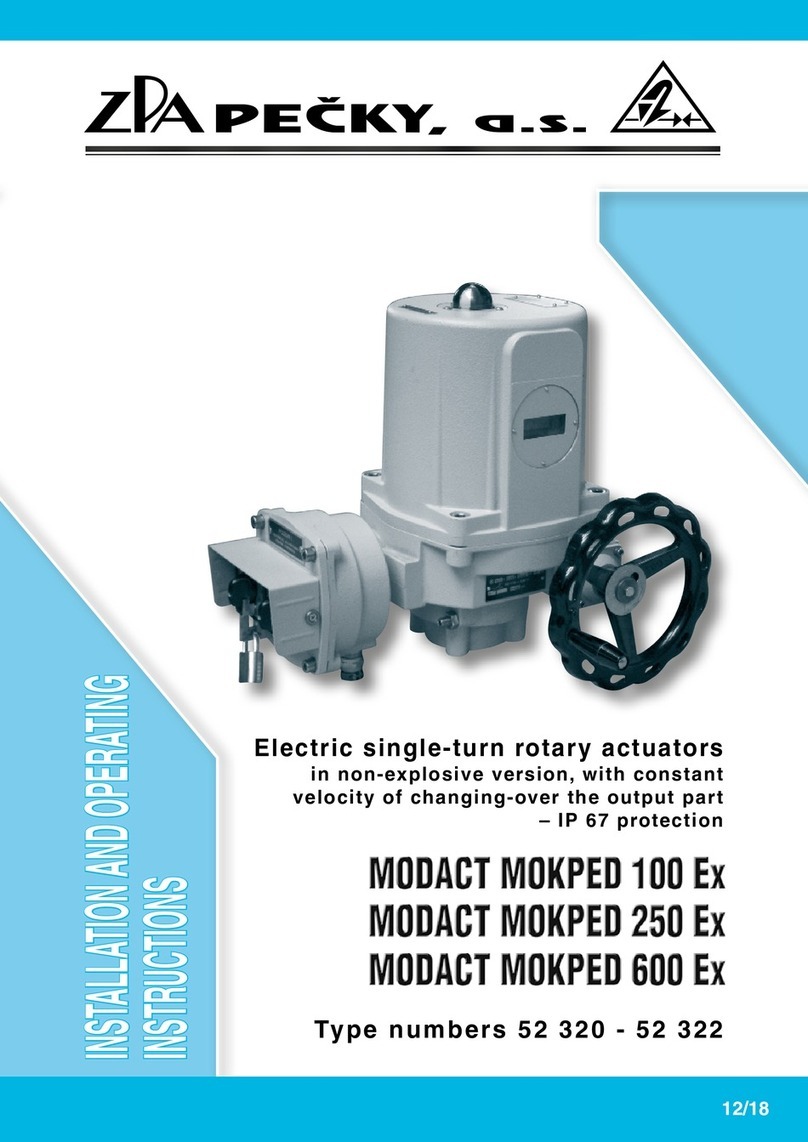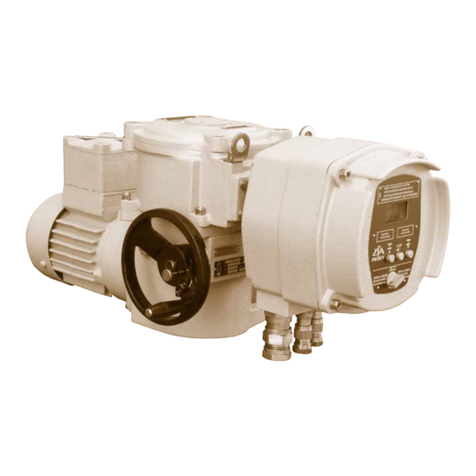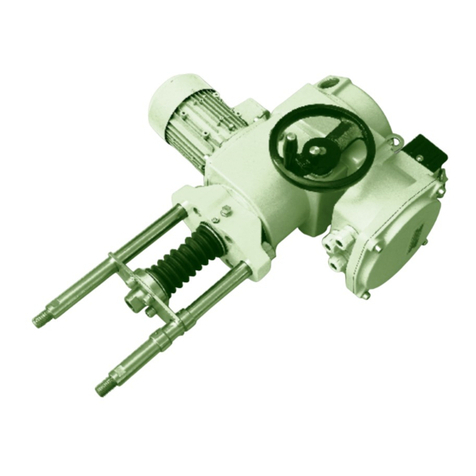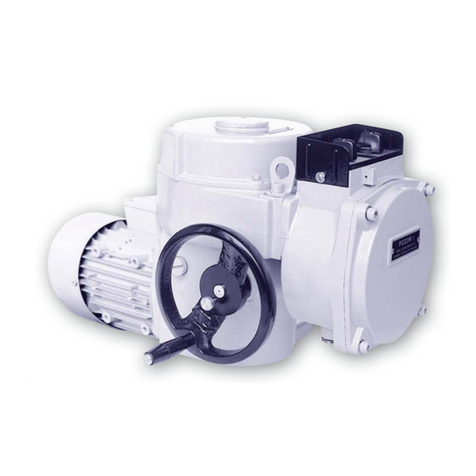
3
1. APPLICATION
The MODACT MTN, MTP actuators are used for remote two-position or three-position control of the valves by
a reverse rectilinear motion.
The MODACT MTN, MTP Control actuators are fitted with an electronic position controller. In association with
the valve exhibiting a suitable control characteristic, they form a position servo-loop. The output pull-rod of these
actuators is automatically brought into a position corresponding to the input signal value of the controller.
The actuators can be used even for other devices for which they are in respect of their characteristics and parameters
suitable. In some special cases, the contemplated use of the actuators should be consulted with the manufacturer.
2. OPERATING CONDITIONS, OPERATING POSITION
Operating conditions
The MODACT MTN, MTP (MODACT MTN, MTP Control) actuators should withstand the effect of operating
conditions and external influences, Classes AC1, AD5, AD7, AE4, AE6, AF2, AG2, AH2, AK2, AL2, AM-2-2, AN2,
AP3, BA4 and BC3 according to ČSN 33 2000-5-51 ed. 3.
When placed on an open area, the actuator is recommended to be fitted with a light shelter to protect it
against direct action of atmospheric effects. The shelter should overhang the actuator contour by at least 10 cm
at the height of 20 – 30 cm.
If the actuator is used at a location with an ambient temperature under +10 °C and/or relative humidity above
80 %, at a sheltered location, or in the tropical atmosphere, the anti-condensation heater which has been built in all
actuators, should be always used. One or two heater elements should be connected, as required.
Installation of the actuators at a location with incombustible and non-conducting dust is possible only if this has no adverse
effect on their function. It is advisable to remove dust whenever the layer of dust becomes as thick as about 1 mm.
Notes:
A sheltered location is considered a space where atmospheric precipitations are prevented from falling at an angle
of up to 60° from the vertical.
The location of the electric motor should be such that cooling air has free access to the motor and no heated-up
blown-out air is drawn in the motor again. For air inlet, the minimum distance from the wall is 40 mm. Therefore,
the space in which the motor is located should be sufficiently large, clean and ventilated.
Surrounding temperature
Operating temperature for MODACT MTN actuators is from -25 °C to +70 °C or from -40 °C to +60 °C, for MODACT
MTP actuators from -25 °C to +60 °C.
CONTENS
1. Application ....................................................................................................................3
2. Operating conditions, Operating position .............................................................................. 3
3. Operating mode, Service life of actuators .............................................................................. 4
4. Technical data .................................................................................................................5
5. Actuator outfit ................................................................................................................ 6
6. Electric parameters .......................................................................................................... 8
7. Description ..................................................................................................................... 9
8. Packing and storing ....................................................................................................... 18
9. Checking of the instrument function and its location .............................................................. 19
10. Attachment to a valve ..................................................................................................... 19
11. Adjustment of the actuator with a valve ............................................................................... 19
12. Operation and maintenance ............................................................................................. 19
13. Failures and their removal ............................................................................................... 20
Tables – basic parameters .................................................................................................21–22
Dimensional sketch MTN, MTP ............................................................................................23–26
Wiring diagrams of actuators MTN, MTP ............................................................................... 27–32
Spare parts list ................................................................................................................... 33
